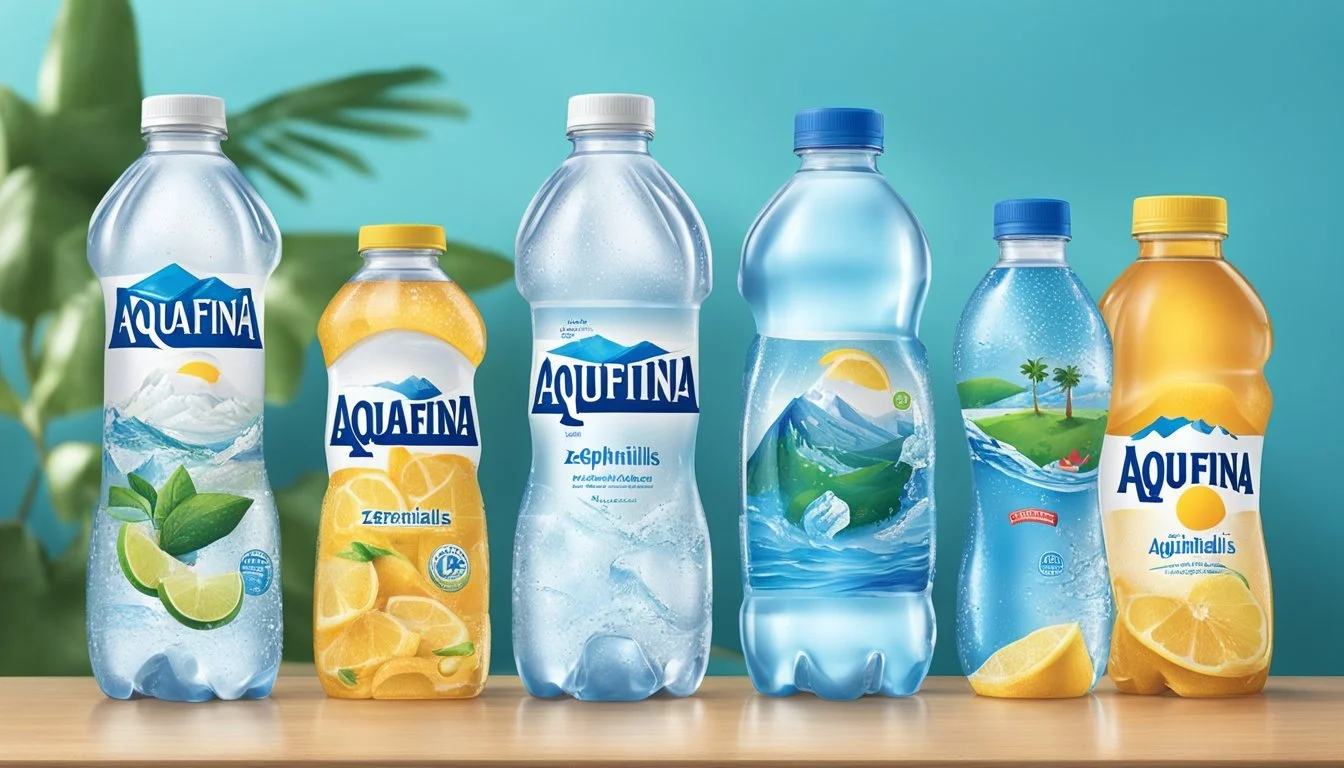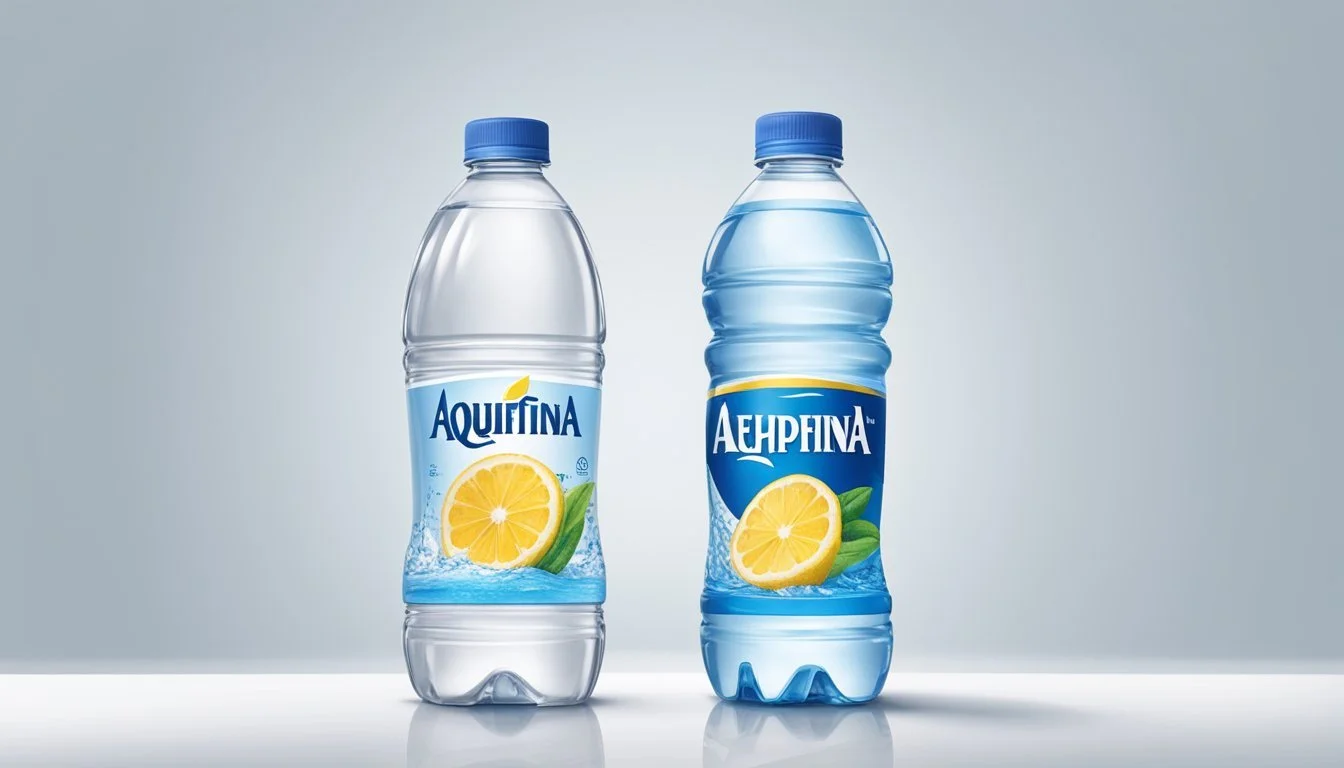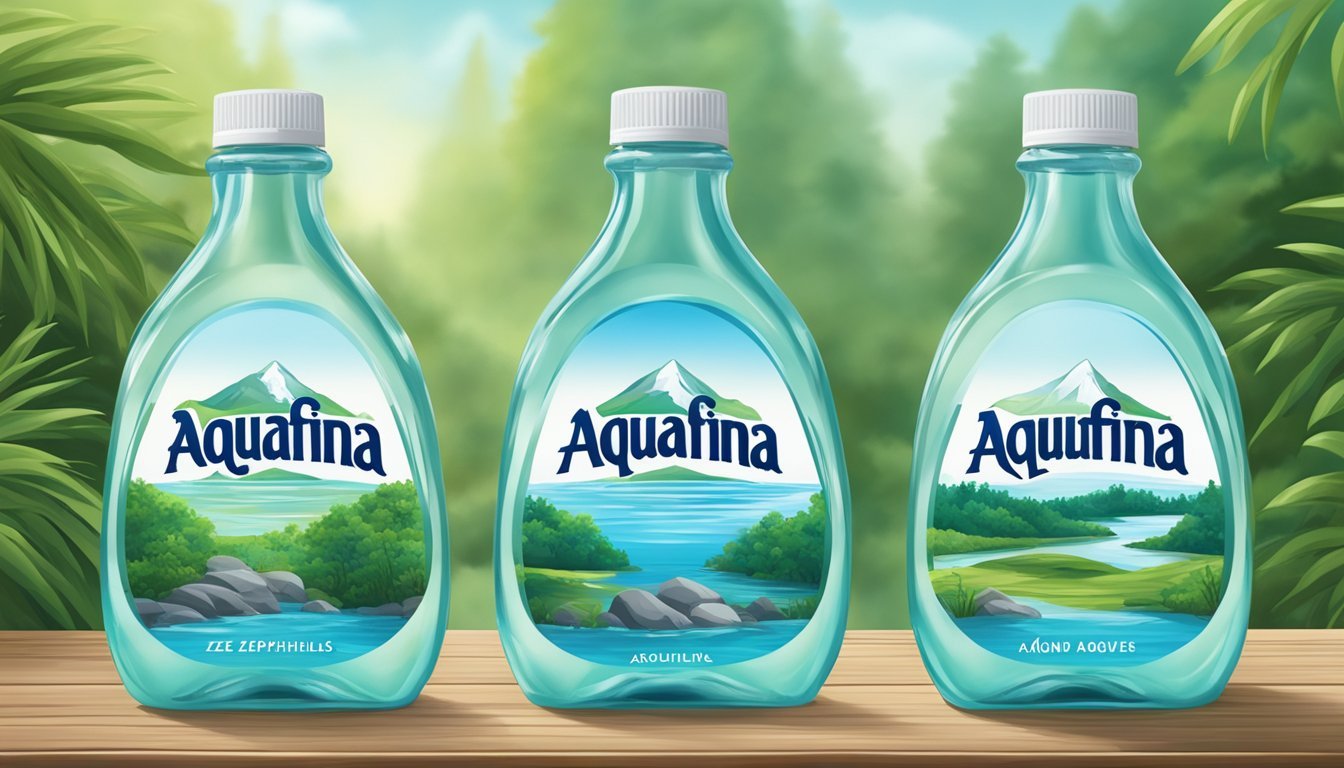Aquafina vs. Zephyrhills
Unveiling the Superior Bottled Water Choice
In the realm of bottled water, consumers are often faced with a plethora of choices, each with its unique source and purported benefits. Two prominent names in this ever-expanding industry are Aquafina and Zephyrhills. Aquafina, produced by the beverage titan PepsiCo, is known for its rigorous purification process that includes reverse osmosis. Meanwhile, Zephyrhills is a brand that sources its water from Florida's natural springs, boasting a naturally occurring mineral content that appeals to those seeking a more "untouched" product.
The debate between which bottled water is "better" can be as much about personal taste as it is about the specifics of the water quality itself. Some consumers prioritize the purification process and prefer the clean, consistent taste that brands like Aquafina claim to offer. Others might opt for Zephyrhills, feeling that the natural minerals contribute to both taste and potential health benefits. However, beyond taste, factors such as sustainability practices, the environmental impact of bottling, and regional availability also play significant roles in consumer preference.
Determining which bottled water to choose can also be influenced by the reports and rankings of water quality from various sources. While some may position one brand over the other in terms of taste or purity, a comprehensive evaluation also takes into account the impact of packaging, the integrity of the source, and the transparency of the companies behind the brands.
Overview of Bottled Water Brands
The bottled water market is driven by an array of brands, each with unique sourcing, treatment processes, and sustainability efforts. Consumer choices range from ubiquitous everyday options to premium selections often associated with superior taste or quality.
Market Leaders
Nestlé Waters, which includes brands like Poland Spring and Pure Life, is a dominant force in the market, alongside Coca-Cola, known for Dasani. PepsiCo's Aquafina, sourced from municipal supplies, competes closely, employing a proprietary purification process. Another notable name is Zephyrhills, a brand that's part of Nestlé's portfolio, drawing water from Florida springs.
Top Bottled Water Brands by Market Share:
Nestlé Pure Life
Aquafina
Dasani
Fiji
Evian
Variety and Availability
A diverse range of bottled waters cater to varying consumer needs. Fiji Water, with its artesian source, and Voss, which is aesthetically notable, stand out as premium choices. Smartwater and Core Hydration offer added electrolytes for taste, whereas Essentia boasts alkaline properties. The market also includes LIFEWTR, Penta, Eternal Water, and Ethos Water, all promoting unique selling points.
Types of Bottled Water Available:
Spring Water (e.g., Mountain Valley, Icelandic Glacial)
Purified Water (e.g., Aquafina, Penta)
Mineral Water (e.g., Perrier, San Pellegrino)
Alkaline Water (e.g., Essentia, Eternal Water)
Flavored and Sparkling Water (e.g., La Croix, Perrier)
Sustainability Initiatives
Sustainability is a growing concern within the bottled water industry. Brands such as Evian have committed to becoming carbon neutral, while companies like Voss focus on using renewable energy in production. The International Bottled Water Association encourages its members to adopt eco-friendly practices. Innovative packaging solutions like plant-based bottles from LIFEWTR and recycling commitments from Dasani also reflect the industry's environmental responsiveness.
Notable Sustainability Efforts:
Evian: Commitment to carbon neutrality.
Deer Park and Arrowhead: Use of recycled plastic in bottles.
LIFEWTR: Introduction of plant-based bottles.
The breadth of bottled water brands, including giants like Coca-Cola and Nestlé, encompasses a spectrum from everyday hydration to luxury beverages. They navigate consumer demands and environmental responsibility, continually adapting to shape a dynamic global market.
Health and Hydration
Choosing between Aquafina and Zephyrhills for optimal hydration and health benefits involves understanding their mineral content and the role of hydration in bodily functions.
Importance of Hydration
Hydration is crucial for maintaining bodily functions. Every cell, tissue, and organ in the human body requires water to work effectively. This includes regulating body temperature, keeping joints lubricated, and helping flush out waste. Bottled water like Aquafina and Zephyrhills can contribute to achieving adequate hydration levels, which is especially important since the human body can lose water through activities like sweating and urination.
Electrolytes and Minerals
Electrolytes and minerals in water can enhance hydration by maintaining a balance of fluids inside and outside of cells. These components help conduct electrical impulses for muscle function and nerve reactions.
Aquafina:
This brand offers purified water, which undergoes a rigorous filtration process. This might include reverse osmosis, ozone sterilization, and ultraviolet exposure. The purification process removes most minerals and electrolytes. For individuals requiring pure, clean-tasting water without added minerals, Aquafina can serve as an appropriate choice.
Zephyrhills:
Sourced from springs in Florida, Zephyrhills is a natural spring water, which naturally contains minerals. It has electrolytes such as magnesium and calcium, albeit in varying amounts depending on the source spring. For those looking for water that has naturally occurring minerals, which can aid in hydration and complement a healthy diet, Zephyrhills may be preferable.
Both Aquafina and Zephyrhills offer options for maintaining hydration, but they differ in mineral content due to their distinct sources and treatment processes. Consumers should make informed choices based on their personal health goals and taste preferences.
Taste Profile Comparisons
In discerning the taste profiles of Aquafina and Zephyrhills, one must consider the distinct flavor factors and consumer preferences associated with each brand. These aspects collectively contribute to the overall reception of the water's taste.
Flavor Factors
Aquafina boasts a taste that is often described as clean and pure, due to its seven-step purification process including reverse osmosis, ozone sterilization, and ultraviolet light treatment. This meticulous process results in a water that many perceive as refreshing and devoid of any pronounced mineral taste.
Zephyrhills, on the other hand, sources its water from Floridian springs and thus retains a natural mineral balance that imparts a subtle earthiness to its taste. Consumers may note a light mineral flavor, typically associated with spring water. This character can be refreshing in its own right and may be perceived as having a slightly richer taste than purified waters.
Consumer Preferences
Consumer preferences can vary widely, but trends show distinct leanings toward certain attributes of bottled water:
Purity: Some consumers prefer the neutral taste of Aquafina, often equated with a sensation of purity.
Naturalness: Other consumers are drawn to the natural mineral content of Zephyrhills, equating the taste with healthfulness and authenticity.
A comparison of online reviews and taste tests indicates that preferences are often split, with no unanimous consensus:
Preference for Purity Preference for Naturalness Aquafina's neutral taste is favored. Zephyrhills's mineral notes are appreciated. Some find Aquafina tastes too "flat". Some find Zephyrhills tastes "less processed".
The choice between Aquafina and Zephyrhills may therefore hinge on whether one values the clean taste of purified water or the slight mineral undertones characteristic of spring water. Each brand has a dedicated following that champions its distinctive taste profile.
Water Source and Quality
In comparing Aquafina and Zephyrhills bottled water, the sources and methods of purification are critical. Each brand employs distinct approaches to ensure water quality and taste.
Natural vs. Purified Water
Aquafina is known for its purified drinking water. It sources water from public water supplies, meaning it starts as regular tap water. This is then subjected to a rigorous purification process to meet its quality standards. In contrast, Zephyrhills is a brand that boasts natural spring water, harvested from various springs in Florida. They pride themselves on providing natural water straight from the source with its unique regional taste profiles preserved.
Filtration Processes
Both brands engage in filtration, but their methods diverge:
Aquafina implements a thorough reverse osmosis process. This removes substances such as heavy metals, some organic and inorganic compounds, and other impurities that can affect the taste and safety of the water.
Zephyrhills, while starting with natural spring water, still filters its product to remove impurities. The brand keeps the filtration process attuned to retaining the mineral composition that gives its water a distinctive taste.
Impact of Source on Taste
The taste of bottled water is deeply influenced by its source and the purification methods used:
The source of Zephyrhills water gives it a flavor that can vary from one bottle to another as each spring infuses the water with a unique mineral makeup. This is appealing to consumers who prefer a more 'natural-tasting' water.
Aquafina's purified approach focuses on consistency. Its reverse osmosis technique not only ensures the removal of solids but also standardized taste across all its products.
These factors collectively determine the positioning of Aquafina and Zephyrhills in the market, influencing consumer preference based on individual taste and quality expectations.
Environmental Impact and Sustainability
When comparing Aquafina and Zephyrhills, one must consider their environmental impact and sustainability practices, specifically regarding Bisphenol A (BPA) content in packaging and overall carbon footprint.
BPA and Plastic Usage
Aquafina, produced by PepsiCo, and Zephyrhills, a Nestlé Waters brand, utilize plastic bottles for their water products. Aquafina states that its bottles are made with PET plastic, which is BPA-free, enhancing their safety for consumers. Zephyrhills, on the other hand, also emphasizes the use of BPA-free plastic, ensuring no contamination of water with this chemical. Both brands have also explored sustainable packaging alternatives such as boxed water, which utilize paper-based cartons to reduce plastic usage.
Aquafina: BPA-free PET plastic bottles.
Zephyrhills: BPA-free plastic, exploration of boxed water options.
Carbon Footprint of Water Brands
The carbon footprint of bottled water brands is influenced by factors such as sourcing, production, and transportation. Aquafina water is purified through a seven-step process, and much of it is sourced from municipal supplies. Zephyrhills, conversely, sources naturally filtered spring water from Florida. The sustainability of each brand can differ based on transport distances and the efficiency of the production process. Both brands have not been clearly identified in search results as sustainable leaders, but they partake in industry-wide efforts to reduce emissions through improved packaging designs and operational efficiencies.
Aquafina: Municipal water sources, seven-step purification, optimized production for lower emissions.
Zephyrhills: Spring water source, potential lower emissions in regional distribution.
Health Concerns and Safety Standards
Evaluating bottled water like Aquafina and Zephyrhills requires analyzing potential health concerns and adherence to safety standards. This assessment includes the presence of contaminants and the regulatory measures ensuring product safety.
Contaminants and Chemicals
Bottled waters are scrutinized for contaminants that could pose health risks. Specifically, substances such as lead, arsenic, mercury, and PFAS chemicals (per- and polyfluoroalkyl substances) can be harmful if present in significant amounts.
Lead: Linked to neurological issues, it is a contaminant that bottled water should be tested for extensively.
Arsenic: Long-term exposure to high levels of arsenic can lead to health complications, so water brands keep a stringent check on this contaminant.
PFAS Chemicals: These substances have been flagged by investigative journalists and scientists for their potential health impacts, including endocrine disruption.
pH Levels: Bottled water is also characterized by its pH level, which determines its acidity or alkalinity. Both Aquafina and Zephyrhills aim to maintain a neutral pH close to 7.
Manufacturers claim to strictly monitor these levels, maintaining quality and ensuring consumer safety.
Regulatory Oversight and Safety
The bottled water industry undergoes regulatory oversight to ensure consumer safety.
FDA Regulations: In the United States, the Food and Drug Administration (FDA) sets stringent standards for bottled water safety, mandating regular testing and quality assurance.
Safety Reports: Companies like Aquafina and Zephyrhills typically provide safety reports outlining compliance with federal health regulations.
Independent Testing: External bodies may conduct additional tests to verify that these bottled waters meet health standards.
Both brands reassure customers of their compliance with safety regulations, and they proactively manage risks associated with contaminants to ensure product safety.
Consumer Information
When choosing between Aquafina and Zephyrhills, consumers should consider label transparency and bottled water certifications. These factors play a significant role in determining the quality and origin of bottled water.
Label Transparency
Aquafina, produced by PepsiCo, and Zephyrhills, owned by Nestlé, provide information on their labels that can help consumers trace the source of the water they are drinking. Aquafina's labels clearly state that their water is purified tap water, undergoing a rigorous purification process that includes reverse osmosis. Zephyrhills, on the other hand, boasts that their water is sourced from natural springs in Florida, which is specified on their packaging.
Aquafina:
Source: Public water sources (P.W.S.)
Purification: 7-step purification system, including reverse osmosis
Zephyrhills:
Source: Florida's natural springs
Note: Specifics can vary based on the water type within the brand
Consumers can seek further information, such as detailed water quality reports, which are often made available on the brands' websites in PDF format. This enables consumers to have a better understanding of what they are consuming.
Bottled Water Certifications
Both brands comply with drinking water regulations enforced by the U.S. Food and Drug Administration (FDA) and may also engage with third-party organizations for additional certifications.
Aquafina:
Certifications: Meets FDA regulations
Contact: Consumers can reach out via email or phone as provided on the label for inquiries.
Zephyrhills:
Certifications: Meets FDA regulations; member of the International Bottled Water Association (IBWA)
Contact: Zephyrhills encourages direct consumer feedback through available customer service channels, such as email or phone.
Reporting by individuals like Ryan Felton at Consumer Reports has shown the importance of the presence of credentials and certifications that can reassure consumers about the safety and quality of their bottled water. Felton's work has heightened consumer awareness and advocacy for transparency. Consumers can follow journalists on platforms like Twitter or use secure communication methods like Signal to discuss and share information on bottled water quality.
In conclusion, consumers seeking more in-depth information can refer to certifications, contact brands directly, and consume investigative journalism to make informed decisions on Aquafina versus Zephyrhills.
Comparative Analysis
In evaluating Aquafina and Zephyrhills bottled waters, the comparative analysis focuses on how these brands stack up in terms of cost and their rankings from worst to best.
Cost Considerations
Aquafina often positions itself as a premium brand, with pricing reflecting its advanced purification process. Packaged in various sizes, its unit price varies depending on volume and retail location. Zephyrhills, sourcing water from Florida's natural springs, generally offers competitive pricing that can be considered of value to consumers who prioritize natural spring water. Frequently, it is priced lower than Aquafina, especially when purchased in bulk.
Aquafina: Often higher-priced than Zephyrhills, varies with retail location.
Zephyrhills: Generally more economical, especially in larger quantities.
Ranking from Worst to Best
The rankings from various sources consistently fluctuate; however, both brands often find themselves in different places on the scale. Aquafina, due to its reverse osmosis purification, may rank higher for purity. In contrast, Zephyrhills might be more appreciated by those who favor the taste of spring water over purified. Neither typically finds themselves at the very bottom or top of lists, indicating that they offer a balance of quality and affordability.
Brand Typical Ranking Consideration Aquafina Appreciated for purity; higher than many competitors Zephyrhills Preferred for natural source; value for money








